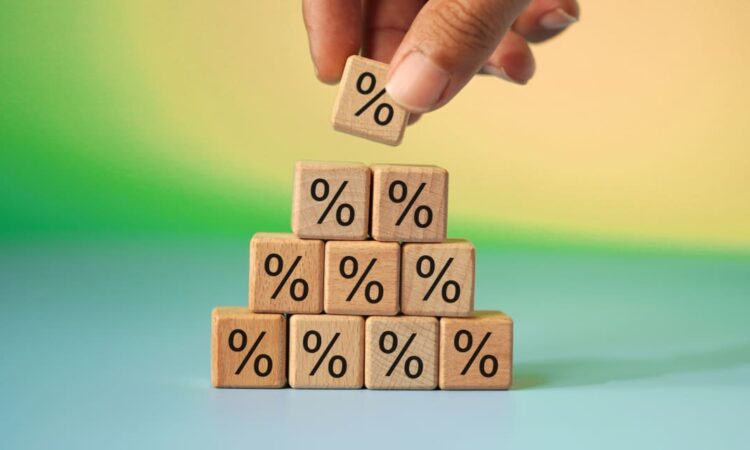
With U.S. interest rates at a 22-year high, home buyers and sellers have been on the sidelines, slowing sales to the most sclerotic pace in more than a decade.
Activity will start to rebound once rates decline, but many are wondering how low rates must go before consumers resume buying and selling en masse. Is there a “magic” mortgage rate that will finally kick-start the torpid housing market?
Absolutely, some industry professionals say. “I told my team, ‘the moment rates dip below 5% again, even if it’s 4.99%, cancel your vacation, because we’re going to have the hottest market we’ve had in years,’” said Ken Baris, CEO of Berkshire Hathaway Home Services Jordan Baris in Livingston, New Jersey. “As rates go down, buying power increases significantly.”
More: Buyers Should Take a Hard Look at These U.S. Cities Where the Tech Biz Is Booming
A September survey by U.S. real-estate industry consultants John Burns Research & Consulting pinpointed that magic number at 5.5%. Nearly three-quarters of respondents who plan to purchase their next home with a mortgage said “they are not willing to accept” a mortgage rate above that 5.5% figure, the company reported.
Advertisement – Scroll to Continue
“Consumers are stuck on low mortgage rates … and still believe a sub-5% mortgage rate is ‘normal,’” the survey’s authors wrote. Still, “consumers aren’t just stuck in the past; many told us they simply couldn’t afford the mortgage payment a rate above 5.5% would entail.”
A 5.5% mortgage rate seems rather optimistic, but rates are falling. The Federal Reserve held interest rates steady at its policy meeting earlier this week for the third time in a row, and three cuts have been penciled in for next year. The news caused the Freddie Mac fixed-rate 30-year mortgage to drop below 7% to 6.95% this week. Meanwhile, Realtor’s latest housing forecast pegged mortgage rates to end next year at around 6.5%.
‘Patience Is Waning’
Some real estate agents and banking executives paint a more complex picture than a straight “magic number.”
“Historically, low interest rates tended to make borrowing more attractive and encouraged home-buying activity,” Matthew J. Vernon, the head of consumer lending at Bank of America in Charlotte. But there are a lot of other factors that affect activity, “including the overall economic climate, consumer confidence, market conditions and affordability.”
More: Rod Stewart Raises the Price of His Los Angeles Megamansion to $80 Million
While some consumers play a waiting game with interest rates, many are losing patience―and are eager to re-enter the market, Vernon said.
An October report from Bank of America found 62% of prospective home buyers were comfortable waiting for rates to fall before moving forward on a purchase. But that was a steep decline from April, when 85% of the same respondents said they would wait until rates declined.
“There is still a core need for homeownership as a part of the American dream, and patience is waning,” Vernon said.
And the length of the waiting game matters. The “magic” rate to spur activity depends how long people hold off for them to come down, said Michael Golden, co-CEO of @properties | Christie’s International Real Estate in Chicago.
“The longer rates are higher, the less they have to come down for people to get excited,” he said. “Now that we’re in the sevens, the sixes are looking more exciting than a year ago. And for people in the sevens and eights, refinancing looks attractive when rates are in the sixes”
5% Would Solve the ‘Lock-in’ Effect
Still, because so many sellers are “locked-in” at historically low rates below 4%, “the magic number for them might be the low to mid-fives,” Golden said. “At that point, the gap is closed enough that you’ll see more movement in the marketplace. But the longer this goes on, the higher the range.”
Some buyers can no longer stall, he noted. “As time passes, more people have to make a decision. They might have had their third kid, or a death, or a divorce.”
The locked-in phenomenon isn’t just psychological. An April study from the Wharton School of the University of Pennsylvania revealed many U.S. households are trapped between their low-rate existing mortgages and the exponentially higher current rates.
“With the median loan amount of $200,000, a 1% point increase means $2,000 more in annual payments,” said Lu Liu, an assistant professor of finance at Wharton who studies housing and mortgage markets. “Raise the rate by three or four points, and that’s a large number. The effect on the housing market is unambiguous.”
More: Luxury Home Buyers Had a Busy November
There’s also a difference in how existing homeowners and first-time buyers perceive the magic number, according to Danielle Hale, chief economist at Realtor.com.
“First-time buyers don’t have an anchor point—they’re not tied to a low rate. They’re also more ready to make changes, while existing homeowners already have a home,” she said. (News Corp owns both Realtor and Mansion Global’s publisher, Dow Jones.)
As a result, it’s hard to pinpoint any magic number for either group, Hale said. “The magic number is a moving target, and it’s going to drift higher over time,” she said. Hale pointed to an April Realtor.com survey in which 74% of Americans said they would not buy a home if rates went above 8%―but millennials (53%) and prospective first-time home buyers (58%) were less resistant.
Regardless of “magic number” wishes, rates are unlikely to sink to the historic lows of recent years, including the record dip to 2.65% in January 2021.
“Those rates? I don’t see them happening again in my career,” said Golden of @properties. “We got so used to those low lows that it takes time to adjust to the new normal. You have to adapt. If we get back to the low fives, that’s actually a really good rate.”






